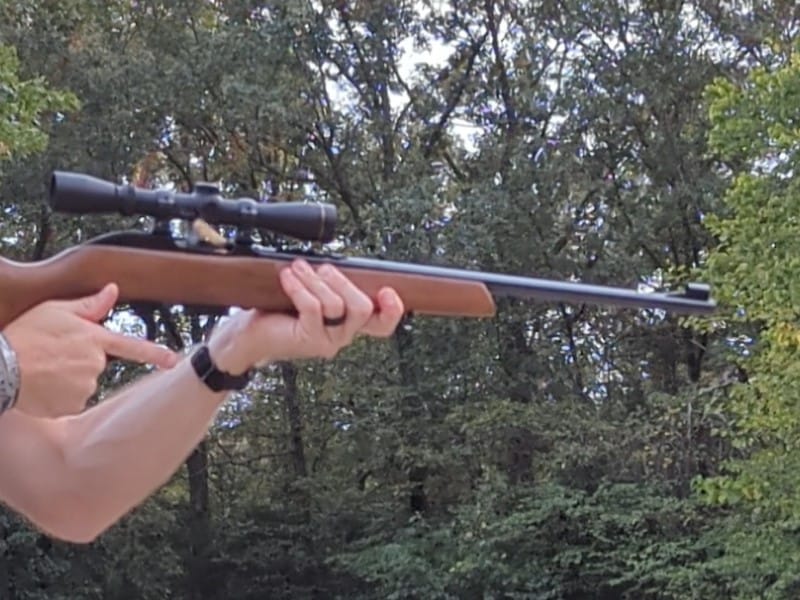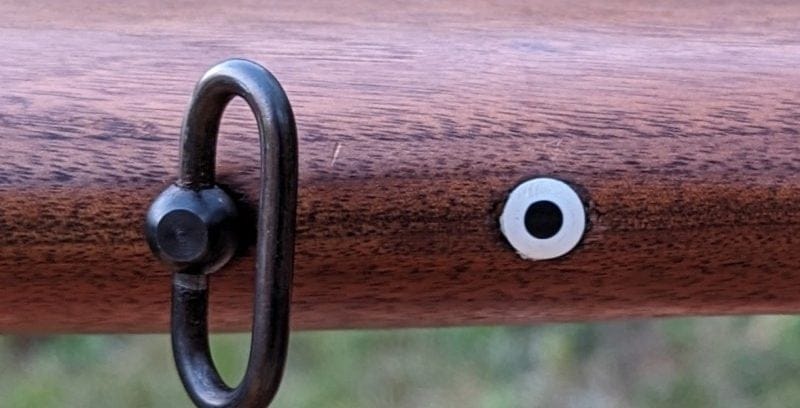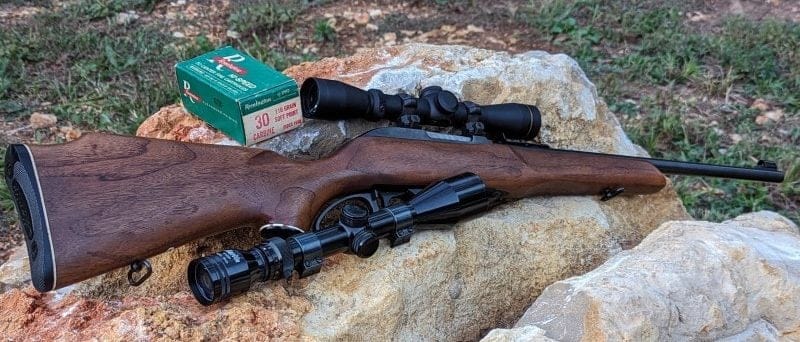Leverguns have a storied history in American firearms culture. The early production of Spencer, then Henry, rifles left an indelible mark on the history of the West. The readily identifiable features of firearms like the Winchester 1873 are now staples of classic Western films. In the late 1800s, Marlin Firearms Company entered the mix with the introduction of their Model 1881, culminating in modern classics like the Model 336, largely regarded as the competitive counterpart to Winchester’s Model 94.
As the years progressed, lever action rifles fell out of popularity somewhat as bolt action and semi-automatic offerings were more accurate and quickly adopted by militaries. Over decades, lever-action firearms retained a surprising amount of popularity as they were reliable, compact, short-range hunting and ranch firearms.
Even into the 20th Century, lever-action firearms maintained a strong presence in the American firearms market. Savage Firearms offered their Model 99, featuring an internal hammer design that was counter to the common appearance of most external-hammered lever actions. This design also used an internal rotary magazine that allowed for a more diverse selection of calibers beyond the classic blunt nose cartridges popular amongst lever actions.
In 1963, Marlin began offering the Model 62, known as the “Levermatic.” This design utilized a cam and roller action, originally developed by the Kessler Firearms Corporation for their shotguns. Marlin ultimately took over the design when Kessler ceased business. The Model 62 remains a unique design of yesteryear with a healthy collector’s market that has continued to grow over the years. Once you handle the Model 62, you’ll understand why.
The Marlin Model 62
The Marlin Model 62 Levermatic is a unique piece of lever-action firearm history. The Model 62 has a toggle safety behind the trigger and is fed by a detachable 4-shot box magazine. The Model 62 is an exceptionally light and handy rifle equipped with a 23-inch barrel and drill-and-tapped for scope rings. It also featured a hooded front sight and elevation adjustable dovetail rear sight.

The Model 62’s action is what makes it truly unique amongst other lever-action rifles. While not nearly as durable as the Winchester 1886 or Marlin 1895; the Model 62’s lever has a less than 30-degree lever throw. Most other lever-action rifles are closer to a 90-degree lever throw. Furthermore, the spring tension of the action made it exceptionally easy to fire follow-up shots without moving the shooter’s hand very far from the stock, unlike most other lever-action firearms. The short lever throw generated the “Levermatic” moniker of the 62.

The rifle’s bolt used the rear of the receiver to obtain lockup and maintain headspace on the cartridge. Unfortunately, the action was not suitable for higher-pressure cartridges. These lower pressures limited the calibers available for the Model 62. This limitation arguably contributed to its short production run.
Marlin Model 62 Calibers
The Marlin 62 was manufactured from 1963 to 1969 and chambered for .30 Carbine and .256 Winchester Magnum. While the .256 Win Mag sounds like a potent cartridge derived from the likes of the .300 Winchester Magnum, it’s somewhat puny in comparison. The .256 is a .357 Magnum necked down to a .257 bullet on top. Designed for varmints, it’s a neat little cartridge for short-range shots and has unfortunately relegated itself to collector nostalgia.
The .30 Carbine, while not wildly popular today, is well-known for its use in the venerable M1 Carbine. This cartridge is not overly potent at range and, for a hunting cartridge, is recommended well inside 100 yards.
From my experience, I wouldn’t take this rifle beyond 50 yards for hunting whitetail deer or smaller game. The bullet can perform with careful shot placement, but I’ve been somewhat hesitant to use it on Whitetail due to the anemic ballistics. In additional consideration, the projectile profile of the .30 Carbine isn’t known for being exceptionally accurate at ranges exceeding 100 yards.
Some claims there are Marlin Model 62s in .22 Jet and .357 Magnum. However, those rifles are most likely gunsmith conversions or a prototype. If you see a Model 62 sold in .22 Jet or .357 Magnum as a factory-chambered original, proceed with caution as it may be too good to be true.
The Marlin Bullseye
While not unique to the Model 62, the Levermatic in my collection has Marlin’s recognizable “bullseye” at the toe of the stock. This tradition began in the early 20th Century as a trademark for Marlin Firearms. The concept was for potential customers to readily identify Marlin firearms from competitors’ lever-action rifles when displayed in gun stores.

Display racks prominently display this bullseye. Prospective buyers could readily identify a Marlin by the bullseye in the toe. The bullseye serves no purpose other than to distinguish it as a Marlin. Some unfortunate Marlin owners have mistaken it as a mounting point for a sling and drilled this location for a sling stud. The bullseye does occasionally work its way out and go missing. When purchased, my Model 62 was sans the bullseye. Luckily, replacement ones are available, and a conservative application of wood glue, tape on the stock, and careful sanding restores the stock to its original glory complete with the bullseye.
My Marlin Model 62
The Model 62 gained my attention as a teenager when my neighbor, Walt, introduced me to his extensive firearms collection. His influence on my passion for firearms has played a huge role in my interest in shooting and collecting firearms. Walt remains a passionate collector of Western firearms and his collection featured a selection of Marlin Model 62s. The short throw lever and feel of the rifle were intriguing, to say the least.
Fast forward a decade when I worked in sales for a firearms retailer. We acquired a collection from a gentleman in Connecticut who inherited most of them from his father. Part of that collection included a near 100% condition Marlin Model 62 chambered in .30 Carbine. The rifle included an original Marlin scope and several hundred rounds of Remington “Kleanbore” Hi-Speed .30 Carbine cartridges, circa 1964-73. The stock and bluing were immaculate. The rifle appeared frozen in time.

Our purchaser provided a fascinating history behind the rifle and Marlin-dominant collection. The seller’s father was a production manager for Marlin Firearms Company for several decades. Eventually, he amassed several Marlin firearms of his own that he hand-selected off the production line. The Marlin Model 62 I held was one of them. I ultimately purchased the Model 62, scope, and ammunition. However, our buyer told me to never contact the seller. The true history behind this rifle remains relegated to an anecdotal story.
The Marlin Model 62 is a fascinating piece of firearms history. Unfortunately, the Levermatic was a short-lived attempt at modernizing the nostalgia of classic lever action firearms. While lever guns are less common today than they were a century ago; the historical, cultural, and collectible impact of lever-action firearms remains strong. The design and operation of the Marlin 62 have a following of collectors and enthusiasts including myself. Once you get a chance to handle one as I did nearly twenty years ago, you’ll understand too.


